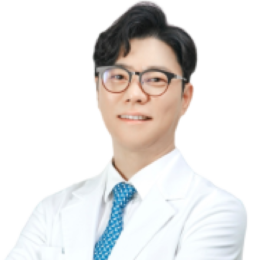
Thank you for visiting Jeisys Medical Japan website. Last year, the HIFU “ULTRAcel [zíː]” was launched. Many of clinics may be considering purchasing this new product. In this issue, Dr. Seiko Soyama, director of Seiko Medical Beauty Clinic, a well-known clinic in Kagoshima Prefecture, will introduce the “ULTRAcel [zíː] ” and the actual procedure.
- INDEX
What is ULTRACel [zíː] (1:02〜)

Looking back briefly on the HIFU history, first there was ULTRAcel, a superior device offering a variety of treatments in 1 unit, which we still use at our clinic today. Then, “ULTRAcel Q+,” an evolution of HIFU alone, leading to the explosive spread of HIFU. Then last year, “ULTRAcel [zíː] ” was launched.

You often ask, “The ULTRAcel Q+ was great, but how is the ULTRAcel [zíː] different?” The most unique feature is the cartridge. Easily change depth with a single cartridge. 4 cartridges can provide 38 different irradiations, allowing irradiations to be tailored to the patient’s skin condition more than ever before. The cartridges are also formed at precise target depths. It has been confirmed that the use of body cartridges dissolves adipocytes.

The second feature is that there are two types: dot and linear. Dot: High-density and high-temperature (65°C) irradiation at the focus to stimulate collagen denaturation Linear: Lower heat than dot, but can cover 4.5 times wider to promote dissolution of fat cells such as the lower jaw and abdomen. It also allows approach to 2.5mm, 3.5mm, and 4mm layers, which ULTRAcel Q+ did not have.

The third feature is higher treatment speed: it was faster when the ULTRAcel was replaced by the ULTRAcel Q+, which reduced the time required per patient, but the ULTRAcel [zíː] is even faster. It is possible to increase bed turnover while ensuring high patient satisfaction. In addition, the cartridge is equipped with a “DWR system” for quick cooling when it gets hot.
Actual procedure of ULTRAcel [zíː] (7:49〜)
We discuss the design with the patient in the sitting position before we start.
While touching the skin, we listen to the patient’s needs along with a medical perspective.
Identify the area to be reduced
Identify the areas that are hollowed out or do not need to be reduced any further.
3 points must be observed in the procedure. First, avoid irradiating nerves. Particularly, avoid the supraorbital nerve, the supratrochlear nerve, the marginal mandibular nerve, and the marsupial nerve.
Second, use the right amount of gel when applying HIFU, as too much gel can cause a slight shift from the intended focus.
Third last, make sure that the device surface is in firm contact with the skin and not floating, also from the sides.
We’ve never had any cases of burns, numbness, or side effects, but we listen carefully to our patients and do not overlook any pain or redness.

Patients I would recommend HIFU to are those who lack definition in the facial contours. Many say that their skin feel tighter immediately following the treatment , and that it gets a little tighter each day for about one to two months afterwards.
What recent studies have found(11:26〜)

There was data that 0.6J is optimal for fat reduction with ULTRAcel [zíː] HIFU, and that fat is still being reduced 2 weeks after the procedure. 0.7J and above are reported to increase macrophages and inflammatory cytokines. Interestingly, HIFU is reported to increase the thickness, number, and size of fat layers when dot-irradiated at 0.2J. Areas near the eyes or appearing sunken should be treated with this irradiation.
Linear 0.4J is expected to increase collagen fibers and decrease collagen degradation. It can be recommended for those who are concerned about skin elasticity.
Our tactics to increase repeat customers(15:21〜)

Our HIFU is administered by doctors, which is expensive at about 100,000 yen for 400 shots, but 2022 data shows that 88% of our patients are repeat customers. The results indicate that they are satisfied with it.
There are 3 things we have in mind to increase repeat customers. The first is to identify the target group. It is the physician’s duty as well to refuse treatment to unnecessary patients.
The second is to convey the value of sagging treatment during sessions. I tell them starting as early as possible, continuing and repeating the treatment is key. Patients are convinced by telling them things like, “For the sagging area you just pinched, I’ll irradiate at this depth and in this way.”
The third and final one is to form rapport. I myself am concerned about age-related laxity, so I try to build rapport through empathy and other means.



